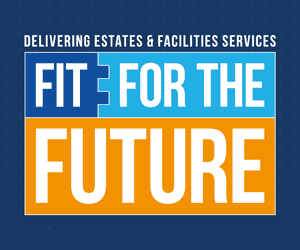An analysis from the Institute for Fiscal Studies paints a bleak picture of the ability of the NHS to achieve the ambitions set out for the recovery of the elective care backlog in the Health Secretary’s plan, published last week.
It cites historic evidence, an unclear picture over how quickly – and how many – patients who have deferred seeking treatment during the pandemic will come forward – and restrictions such as lack of staff in its analysis, which states worst case scenario could see waiting lists peak in December 2023 at 10.8 million and remain several million above pre-pandemic levels by the end of 2025.
The recovery plan ambition is for nobody to be waiting more than one year for treatment by March 2025. However, the IFS points out that target has never been achieved by the NHS since comparable records began in 2007. It came closest in 2013-14 when there was an average of 370 patients each month who had been on the waiting list for more than a year. In February 2020, the last month prior to the pandemic, this figure stood at 1,600.
Furthermore, to achieve the ambition set for it, the NHS will need to deliver 30% more elective activity than it did before the pandemic, which is an unprecedented increase. The IFS puts it into historical context: Over the three years between 2016-17 and 2019-20 the number of people receiving treatment from the waiting list increased by just 4.3%. Even during the early 2000s when real-terms NHS funding was increasing by more than 6% per year, NHS activity didn’t grow at the required rate – between 2002 and 2005 health service output, as measured by the Office for National Statistics, grew by 22.5%.
The ability of the NHS to achieve this ambition could be impacted further by the geographical spread of demand for services, for instance, if there is a high demand for care in areas where the providers are already under pressure, or for more specialist services that may have more capacity constraints.
Predicting the rate at which people who may have put off seeking help over the last two years will return is a further complication. IFS presents four different scenarios which reflect the uncertainty of the situation:
• Plan Low – assumes the NHS hits its 30% increase target but only 30% of the ‘missing’ patients return – waiting lists will peak at 7.4 million in June 2023 and fall to pre-pandemic levels by summer 2025
• Plan Medium – assumes the NHS hits its 30% increase target and 50% of the ‘missing’ patients return – waiting lists will peak at 8.7 million in October 2023 and almost reach pre-pandemic levels by the end of 2025
• Plan High – assumes the NHS hits its 30% increase target and 80% of the ‘missing’ patients return – waiting lists will peak at 10.8 million in December 2023 and remain above pre-pandemic levels by the end of 2025
• Pre-Pandemic Status Quo – assumes none of the ‘missing’ patients return, but the NHS is unable to increase capacity above what was planned in the 2019 Long Term Plan, perhaps because of staffing levels or other constraints – waiting lists continue to rise steadily over the whole period as growth in capacity fails to keep pace with demand.
There is currently little evidence that people who missed care during the pandemic are flooding back to start treatment. If this continues, the IFS believes the Low Plan scenario is the most likely. Whichever way it pans out, the process of recovery from the shock of COVID-19 will take years.
Matthew Taylor, Chief Executive of the NHS Confederation says the IFS analysis confirms the enormity of the challenge, and although NHS staff will do their best to make inroads, working “flat out” to tackle the backlogs, it is a huge task, the single biggest barrier to success being the absence of a fully costed workforce strategy. “It is impossible to see how backlogs will be cleared by March 2025 without the right number and mix of staff in place. This must be an urgent priority for government,” he says. He adds that the government must be honest be with the public and at the same time not ignore other backlogs that have built up in community, mental health and primary care.










